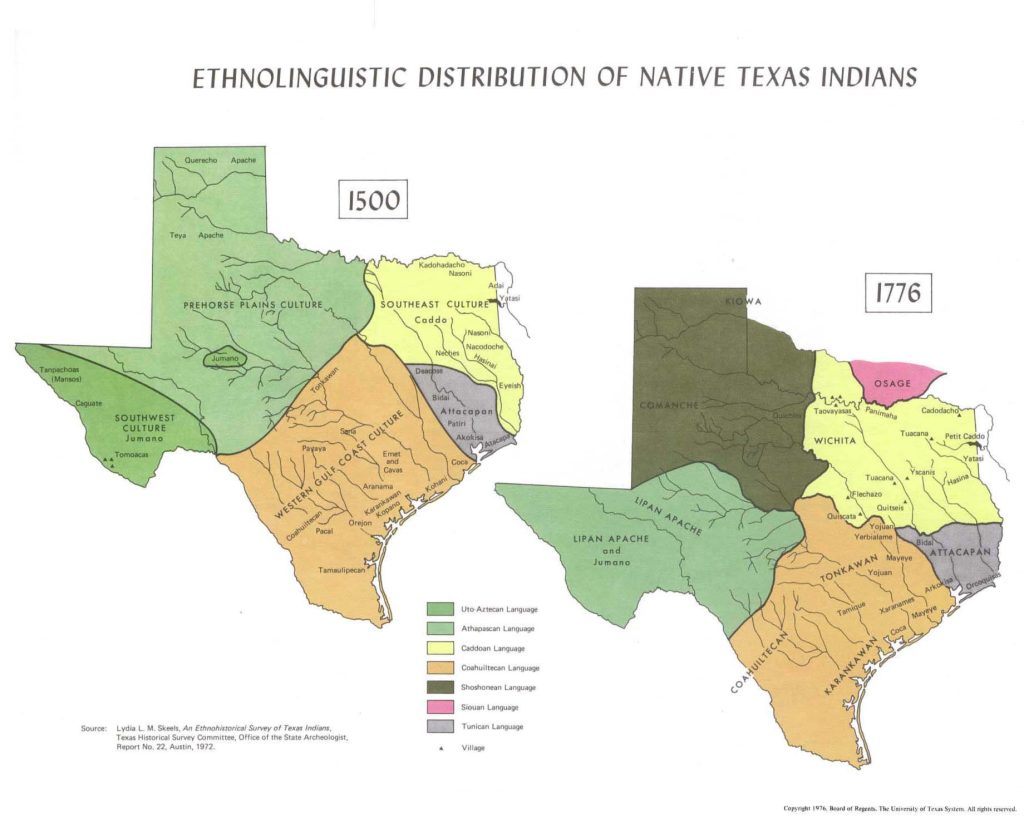5 The Talon Brothers Describe Texas
Talon Brothers Interview on Texas, 1697
Pierre and Jean-Baptiste Talon were two French boys who survived Salle’s attempt to colonize the Texas coast during the 1680s. After their rescue, the two boys went to live in Mexico City and became wards of the Viceroy of New Spain. Years later, the French navy captured the two boys on a Spanish ship and interviewed the two in 1697.
“On the fruits and tender vegetation this land produces.”
When describing the nature of this region, mention was made of some of the fruits found there, like nuts, berries, etc. to which one can add red and white grapes, for there are a great many vines in the woods, whose vinestocks are much larger than those of Europe and whose branches climb very high on most trees; but those grapes are sour, since they grow wild and are not cultivated.
Besides the ordinary nuts, there are some extremely large ones. There are also hazelnuts in quantity, and certain fruits called figs, but which are not like the figs of Europe. They are very much like the banana. There is also a prodigious quantity of berries with delicious taste that are good to eat and on which, as well as on the grapes, diverse species of small birds feed; and there are also several kinds of native fruits of which they know neither the name of characteristics. But there is one among the others that is extremely refreshing. It is shaped like an egg and grows on bushes with thorns. The Spaniards eat it and value it very much. They call it ”tuna.”
The whole country produces maize or corn, potatoes, gourds, pumpkins, and beans of several kinds. Sieur de la Salle had some sowed and cultivated at his dwelling and had some grain brought from the Cenis village.
The soil there appears everywhere suitable for producing all sorts of grains and vegetables if one were to sow them there; however, it does not rain very much in that country.
There are many bees in the fields that make their honey in the grass and in trees. But the savages do not cultivate them, contenting themselves with eating the honey wherever they find it.
Tobacco could be grown there because the Cenis cultivate some, though very little, and only for their own use. There is red pepper in quantity.
The said Talons also speak a great deal about a kind of strong-smelling root, which is common in all the country and which is related to ginger. The natives believe this root has the virtue of making the hair grow; and in view of this, they rub their heads with it after having chewed it.
They believe also there is cotton, but are unable to give any details.
It is believed that there one could gather and process turtles, there being an abundance of turtles of all sorts, large and small, aquatic and land, whose flesh is perfectly good to eat.
The savages have nothing to barter but buffalo and deer skins, which they dress like chamois skins and make soft as cloth, despite the fact that the cattle of this country (buffalo) are much larger than those of Europe.
There will be presently a quantity of runaway or wild pigs all over the country, the French having released some that had already reproduced prodigiously by the time the Talons left there. The savages do not eat them, saying they are the dogs of the French, which they imagined because they have not known dogs other than the wolves they capture when very small, tame, and train for the hunt.
The ordinary hens that were in the French settlement before the massacre…have multiplied considerably. The savages have not had the same aversion for these chickens as for the pigs because they eat them without hesitation and find them good. There would be no lack of milk in this country if one took the trouble to tame the buffalo cows that give it in abundance. But the savages do not want to take the trouble, contenting themselves, when they have killed one, to suck at once all the milk she has.
According to the rather vague statements of the Talons, once can infer that there is salt, because they say the French used to gather a sort of white sand along the seashore and the banks of the saltwater ponds, which they boiled in water until it came to the consistency of salt, and with which they seasoned soups and meats. As for the savages, they use almost no salt, and to preserve their meat they simply dry them in the sin, after having cut them into very thin, round slices.
Weddle, Robert S. La Salle (editor). The Mississippi, and the Gulf: Three Primary Documents (College Station, Texas: Texas A&M University Press, 1987). Pages 225-258. American Journeys: https://content.wisconsinhistory.org/digital/collection/aj/id/7692


